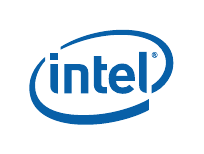
Intel
®
IXP45X and Intel
®
IXP46X Product Line of Network Processors—PCI Interface Design
Considerations
Intel
®
IXP45X and Intel
®
IXP46X Product Line of Network Processors
HDD February 2007
74 Document Number: 305261, Revision: 004
The limitations of the maximum trace length can be calculated with the equations
shown in Section 6.2. Solve for T
PROP
and use it to calculate the maximum trace length.
This is a straight-forward calculation, but very critical to meet timing. It is
recommended to keep the trace lengths as short as possible and not to exceed T
PROP
.
Note: For acceptable signal integrity at up to 66 MHz, it is very important to design the PCB
board with controller impedance in the range of 55 Ω ±10%
.
6.3.2 Routing Guidelines
It is recommended to route signals with respect to an adjacent ground plane. If routing
signals over power planes, ensure that the signals are referenced to a single power
plane voltage level and not multiple levels. For example, you can route signals over a
3.3 V plane or a 5 V plane, but do not route the same signal over both planes. If signals
are routed over split planes, you must connect the splitting planes with 0.01 µF, high-
speed capacitors near the signal crossing the split. The capacitors should be placed no
more than 0.25 inches from the point at which the signals cross the split.
This manual does not repeat all the guidelines that are already stated in the PCI Local
Bus Specification, Rev. 2.2, instead you should refer to the specification when
designing either a motherboard or an expansion card.
6.3.3 Signal Loading
Shared PCI signals must be limited to one load on each of the PCI slots. Any violation of
expansion board or add-on device trace length or loading limits compromises system-
signal integrity.
